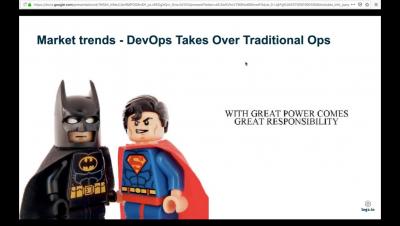Operations | Monitoring | ITSM | DevOps | Cloud
Analytics
What Is Log Analytics? Find Important Patterns in Your Logs
If your work in IT, especially in the software field, then you’re almost certainly aware of logs. An application that doesn’t generate any type of logging would be unheard of, to say the least. What about “log analytics?” Do you know this term?
Introducing Logz.io on the Azure Marketplace
The Azure Marketplace makes it easy for customers to identify, subscribe to, then use SaaS and API solutions by removing barriers in the procurement process for purchasing those products. By using the existing payment terms they have with Microsoft, Azure customers can click through a simple workflow to purchase an ISV solution without needing to negotiate new terms or speak directly with an Azure or ISV representative.
Business Intelligence and Log management - Opportunities and challenges
Business intelligence (BI) is all about making sense of huge amounts of data to extract meaningful and actionable insights out of it. Log management tools such as Graylog, instead, are the perfect solution to streamline data collection and analysis, so it’s easy to understand how these two technologies can make sense when they’re coupled together.
Splunk Data Fabric Search Overview
Replicating and Restoring LogDNA Account Configurations
As an engineer who has set up logging for more than one deployment or environment, you know that you usually have one logging account per deployment. You’ve got plenty of pre-created queries, graphs, and alerts set up specific for your company’s use case, all of which are vital to you knowing the health of your infrastructure. Now imagine being responsible for creating and maintaining logging accounts across 10+ deployments.
Monitor MapR performance with Datadog
MapR is an Apache Hadoop distribution that enables organizations to manage, analyze, and store all their data at scale. MapR handles a wide range of data types across infrastructures and locations by leveraging dataware, an abstraction layer in the enterprise software stack that separates data from any dependencies. We’re excited to announce that our new integration provides comprehensive visibility across all the moving parts of your MapR deployment.
Share Query Results Between Panels In Grafana 6.4
Multi-Cloud is Finally Here!
First time this year, multi-cloud enterprises, as a customer segment of Sumo Logic, have grown faster than any other segment: 50% Y/Y. What took so long? In my conversations with enterprises over the last 5 years, there was only one strategy for public cloud and it was multi-cloud. But evidence of multi-cloud usage was sparse at best. Data from our Continuous Intelligence Report in previous years didn’t find much to support that the strategy for multi-cloud was being implemented.











